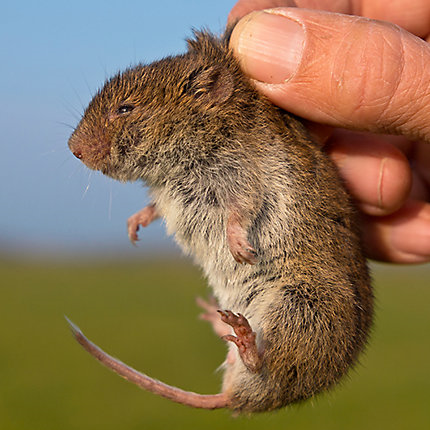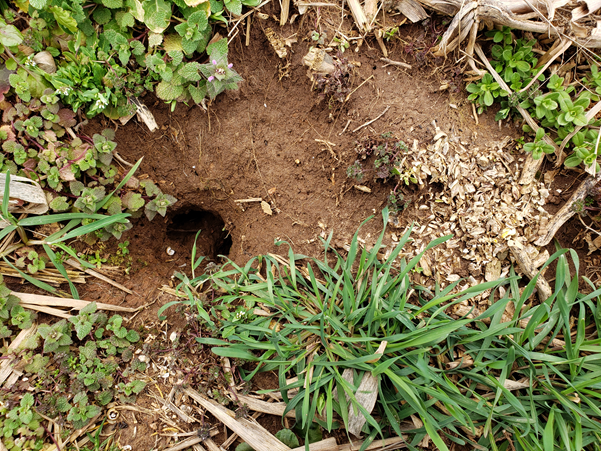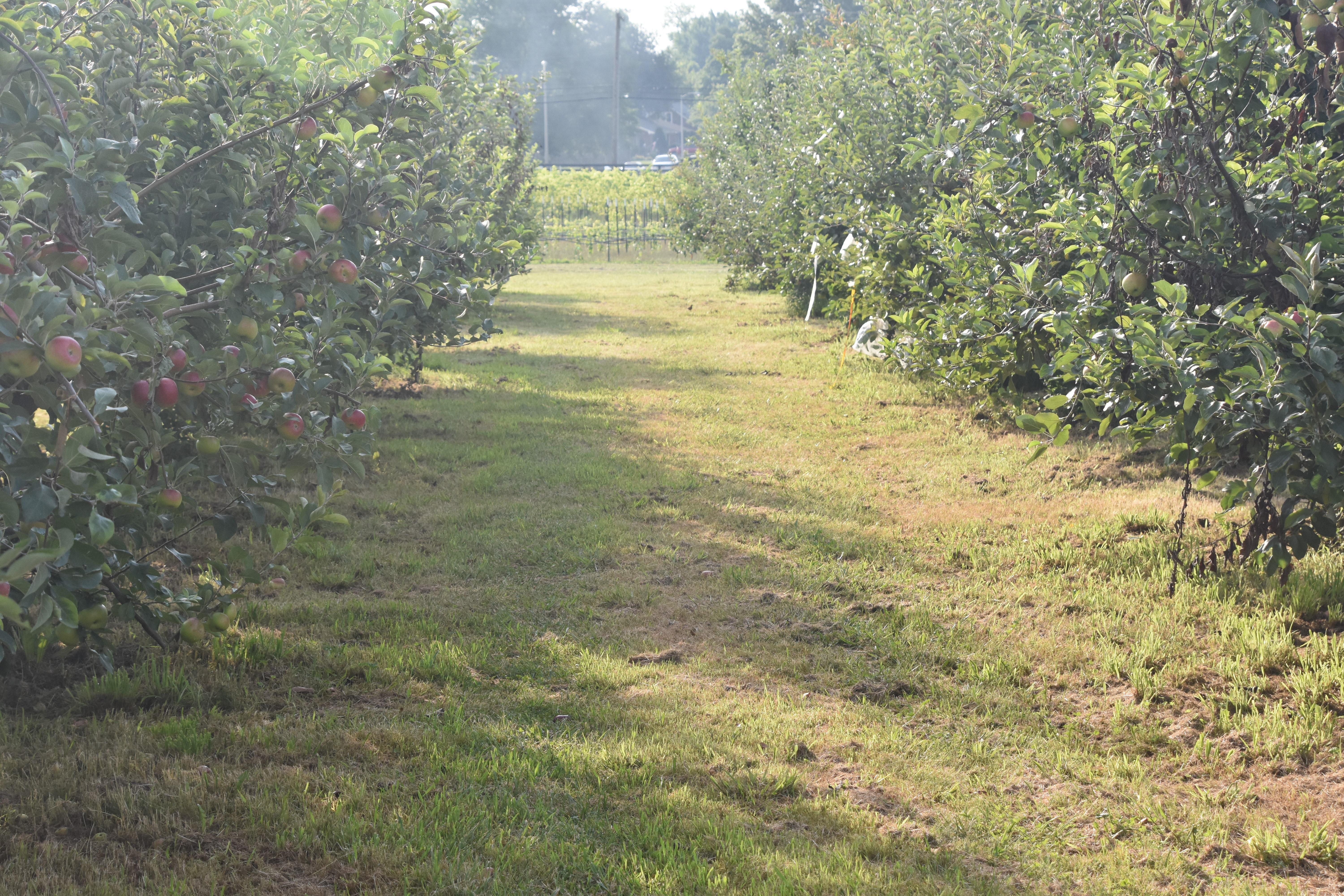Vole and Mouse Damage in Peach
Return to Wildlife
Voles (Microtus spp.) and mice (Perymscous spp.) chew on irrigation lines and bases of trees. Damage to trees may occur a few inches below ground, as well as aboveground. Voles are more problematic during winter months. Teeth marks on trunks or fruit and high concentrations of runs or holes are key characteristics indicating the presence of voles. Mice tend to cause more damage during summer when they feed on fruit.

Prairie vole.
(Photo: Jena Nierman, University of Kentucky)

Vole run with access hole.
(Photo: Jena Nierman, University of Kentucky)

Short grass helps limit available rodent habitat.
(Photo: Matthew Springer, University of Kentucky)
Management:
- Use a combination of habitat management and promotion of avian and mammal predators to offset vole or mice populations.
- Keep grass mowed short between rows to limit cover habitat.
- To attract natural avian predators, place 12- to 15-foot tall (1-inch diameter) PVC pipes with a 1-foot roost section mounted perpendicular at the top.
- Collect fruit from the ground after harvest to limit food availability during winter.
- Scout for high concentrations of runs and holes in autumn to determine if management actions are needed.
